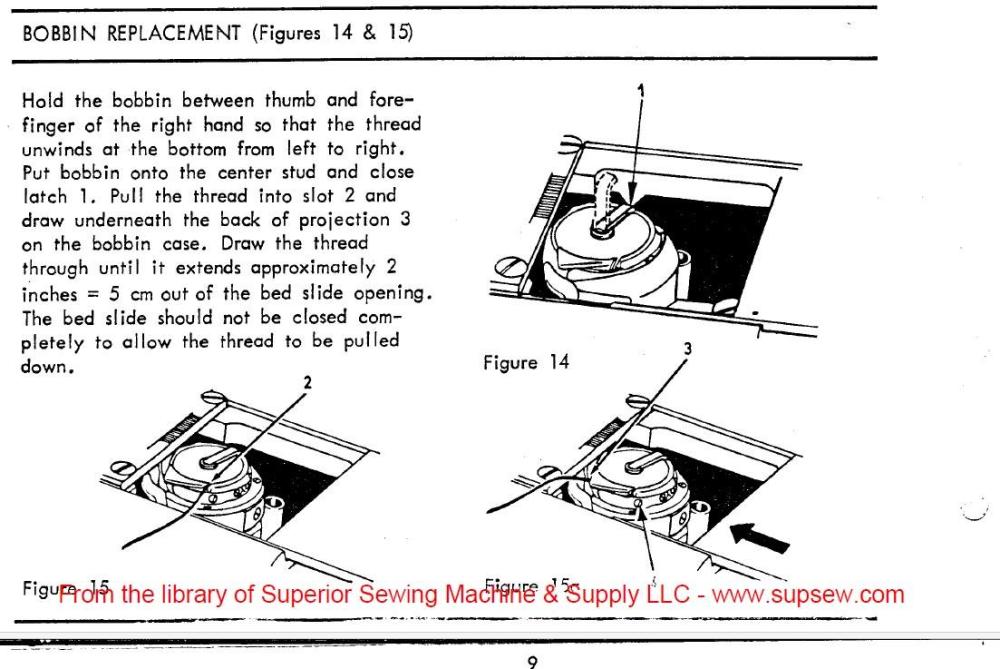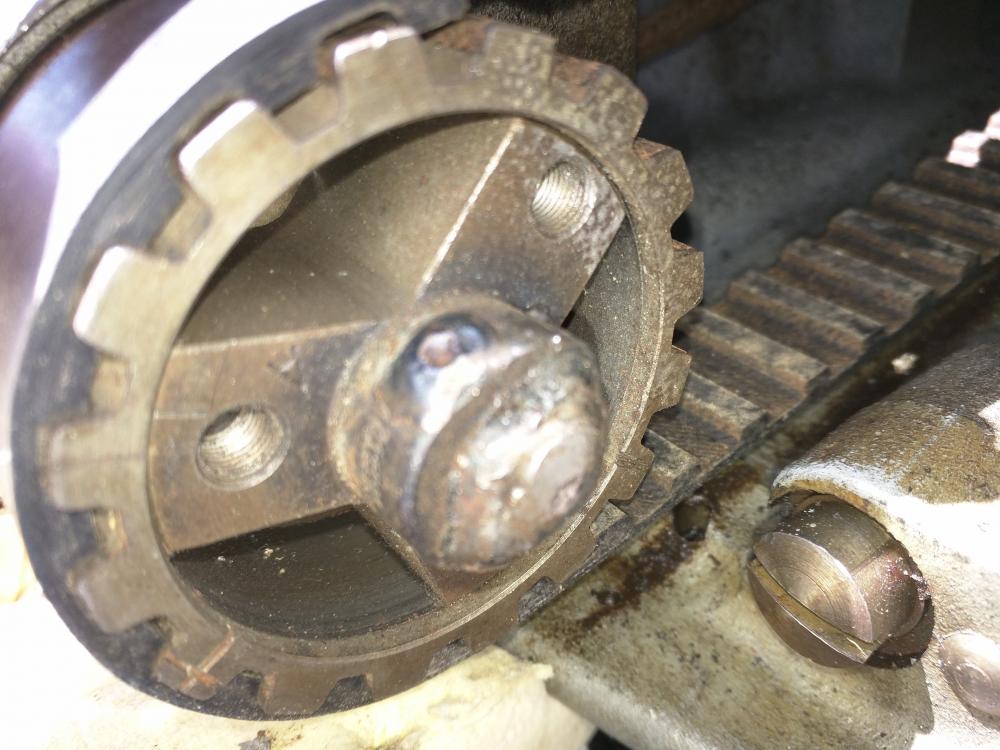
DennisT
-
Content Count
16 -
Joined
-
Last visited
Posts posted by DennisT
-
-
-
The experts will chime in with definitive info. I'm guessing the 211G256 is a 211G156 with lubricated hook but I could be wrong. Ive had a 211G166 for a while. I used Uwe's video to time mine. Wonderful tool.
-
I have used singeronline.com without any issues a couple of years ago for my 211G166. Have you contacted them?
-
I have a Rex 607Z for use in my motorhome and think it works fine with V92 bonded poly sewing 2-4 layers of 8 oz canvas but is marginal with 138. The 138 stitches need to be a little loose or will pucker and is finicky to get the tension right. I think the Sailrite LSZ-1, Rex 607Z and the Reliable Barracuda are essentially the same design machine based on a Thompson and is a stretch to spec them at 138 thread. The Sailrite is likely a better built machine and leaves Sailrite adjusted and ready to sew from what I have read. I have had issues with my 607Z staying in adjustment initially but now it has been solid for a couple of years of occasional use
-
I am a hobbyist at canvas. No leather experience. I've had a Rex 607Z for about 8 months. I purchased it as a cheap portable to use while in RVing in Florida for boat and RV canvas. Traveling in a motorhome make it impossible to bring my 211G266. The REX 607Z can be described as a low quality Sailrite LSZ-1. I found it was not set up properly when it arrived. I used instructions and videos for the LSZ-1 to muddle through completely adjusting it so it was working as perfectly as possible. Then during a big project it would go out of adjustment again. I replaced as many set screws as possible with quality allen head cup set screws that would hold an adjustment. The main issues out of the box were needle bar height and walking foot travel in addition to hook timing and adjustment. The maching tolerances are poor. There is too much play in the bottom shaft. The driver timing is difficult to change as it is pinned. With all of these issues I have completed several canvas projects and successfully used profilen lifetime thread. This is not a leather machine by any stretch.
PM me for a link to a video on seting walking foot height and range of motion.
-
The Sailrite Fabricator is essentially the same as your Consew P1206RB as well as my Tacsew T111-155 as I understand it. Download the Sailrite Fabricator manual from https://www.sailrite.com/PDF/2016_Fabricator_Guidebook.pdf It was a big help to me.
-
-
Have you investigated the old Singer 111 and 211 manuals for insight in timing your Consew. They certainly share some parts I noticed while looking a stuff for my 211G166.
-
Thanks Bob. I was able to play with it and get it somewhat initially adjusted. The lock set screws are missing but thay should be easy to come by. The other issue is the stitch length plunger is stuck in the down position, cut down or replaced by a rivet. In any event it can't engage being too short and no spring. I must grab the adjusting disc with soft jawed pliers to change the stitch length. I ordered an new plunger, spring and clip so hopefully I can remove the old one. I'm not real familiar with what the plunger should look like but what's in there doesn't look like the pic in the parts list. It looks more like a rivet and is in there tight. I just picked the machine and table up in Canada while visiting a friend and won't be back home to get it set back up for a couple of weeks yet. Then I will tackle trying to get it properly cleaned up and adjusted.
Dennis Turner
Tacsew T111-155, Singer 211G166, Singer 31-15, REX 607Z, Pfaff 130
-
CowboyBob,
You are correct. Thanks for observing that. I guess you have seen a few of these. Reviewing the pic on Eric's thread "Rebirth of a Singer 211G155" I noticed the lock screws were almost flush with the outside of the overload pulley on that machine as opposed to mine being burried. I agree the ball bearings must be locked down. Tomorrow I will play with it. Hopefully all of the springs and set screws are present.
Dennis
-
CoboyBob,
Thanks for the response. You made me look more carefully at the parts diagram. I assumed the safety clutch was supposed to have the levers and catches like the 111W155 which was missing from my unit. From the parts manual I now see this one has a ball bearing release mechanism. I attempted to lock the shaft and simulate a fault but the clutch does not release. That could be from sitting or needing adjustment. The ball bearings, springs and screws are there. I will play with it and see if it will function.
Dennis
-
I just acquired a 211G166 that had previously had the safety clutch/sprocket welded to the hook drive shaft. I'd really like to put it back to original if possible as I wanted to make this my leather machine. As far as I can tell at this point it sews fine. The belt lower timing is advanced one cog relative to the marks but the hook is almost perfectly in time as well as the compound feed timing. My guess is there was a problem with the clutch and the solution was to weld the pulley to the shaft and somehow compensated for the timing marks being off. I'm pretty sure I can grind away the weld enough to remove the old pulley and replace with a safety clutch(240539), which I have found several sources. Tha original safety clutch (244759) is not available. The problem I have is if the hook drive shaft is not salvageable I have no source for that part (508350). I'm hesitant to touch anything without a way to obtain a shaft. Any suggestions? Should I leave well enough alone. Any sources for the shaft I can't find with google? Is there a substitute?
-
If you have not already check the condition and height of the feed dogs. The instructions are in the service manual. Here is one I converted from original scan.
http://www.mediafire.com/file/s34vninejvcl55g/pfaff_130_Service_ManualR3.docx
-
I have a Pfaff 130 equiped with a Consew CSM1000 servo motor(200 RPM minimum, 75mm motor pulley) that punches through 4 layers of sunbrella with v90 polyester or profilen thread after replacing the upper tension spring with a heavier one. I have not tried it with any light leather. Assuming your Pfaff 30 is similar, even with a 1.5 amp motor I would suggest an intermediate reduction pulley pair if you can find something that will fit. For what that will cost a servo motor will be a better choice in my opinion. One major limitation for me is the 4-5mm stitch length maximum, not ideal for canvas. I am just learning about leather so I cannot comment.
-
I just got a Tacsew T111-155 that was stored is a shed for 10 years. It was mostly dusty but uncovered with the oil pan off. I cleaned it up, manually oiled it and put oil in pan. It sews great with the small sample of material I have tried so far. The hook is definately oiling as I needed to reduce the flow to eliminate oil in feed dog but of course the oil does not need to lift as in the top oil circuit. I cannot see anything happening through the bubble window on top nor in the clear return line ( I think) underneath. I have played with the bypass hole opening and totally closed it, removed screen, inspected the pump impeller and made sure the vertical oil line was open by blowing a air through a straw. I'm testing by running 2000 rpm on my servo motor for a few minutes at a time. Any insight will me helpful. This stuff is new to me.



Singer 111w153 vs 211G165
in Leather Sewing Machines
Posted · Report reply
the 211g165 does not have reverse. Neither does a 111w153 as I understand.